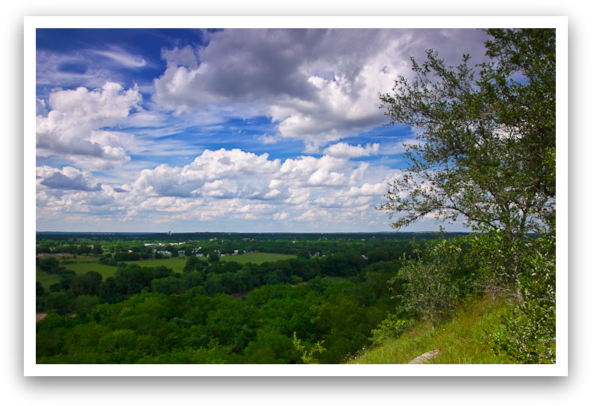When photographing landscapes it's often difficult to capture enough detail and color saturation in the bright sky and in areas along the horizon while also exposing the foreground properly. You could capture a series of bracketed exposures and process them as an HDR image as I've done before or you can turn to a simple and extremely effective tool such as the graduated neutral density filter.
The graduated neutral density filter is one of the most important tools in a landscape photographer's kit. No other filter (including the circular polarizer) will have such an impact on a landscape image and believe me, this trick has been around almost as long as photography itself.
The image below was taken using a 3-Stop/Soft rectangular Singh-Ray Graduated Neutral Density Filter held in place in front of the lens using a Cokin "P" Series Filter Holder. No lightening or darkening was performed during post capture processing. This is exactly what I saw looking through he viewfinder. The clouds were bright, the sky was a beautiful blue and the trees in the foreground were exposed perfectly.
I strongly recommend this type of ND Grad filter and holder since it allows you to control exactly where the effect begins and ends. Conventional (round) graduated neutral density filters set the ND effect to begin directly in the middle of the image and very few well composed landscape images have the horizon right in the middle.

Monument Hill Clouds
Copyright 2009 Jeff Lynch Photography
Shot taken with a Canon EOS 50D set on aperture priority (Av) using an EF-S 10-22mm f/3.5-4.5 USM tripod-mounted. The exposure was taken at 15mm, f/14 for 1/100th of a second at ISO 100 on Lexar Professional digital film. Post capture processing was done in Lightroom 2 using Nik Software's Dfine, Sharpener Pro and Viveza filters. Click on the image above for a larger version.
Posted in Photography Tagged: Canon, Canon 50D, Landscape Photography, Neutral Density Filter, Singh-Ray Filters
![]()
No comments:
Post a Comment